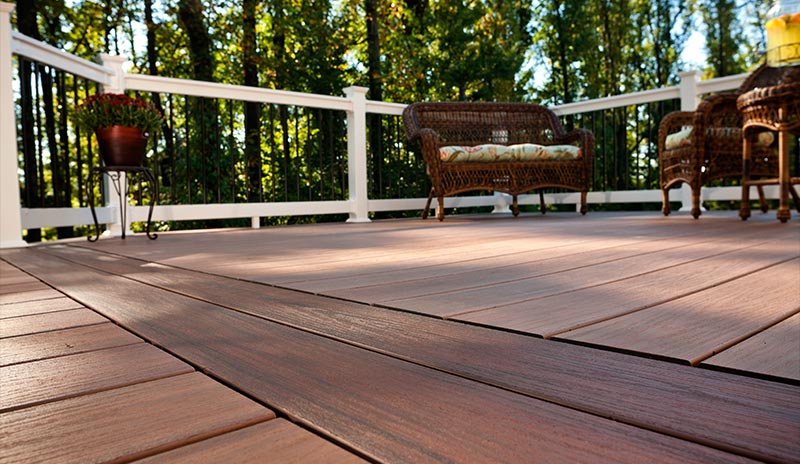ASA Decking Material - One of the Best Synthetic Decking Materials on the Market
If you’re thinking about building a deck and want to go with a synthetic material, you need to understand your options. Besides real wood, there are a number of synthetic materials on the market, including PVC, capstock, and composite.
Composite, a combination of plastic, wood fibers, and wood flour, is the least expensive option and has several benefits over wood, but also requires regular maintenance and is prone to dry rot, staining, and mold and mildew. Capstock is essentially composite decking with a layer of PVC on the outside. It’s resistant to all kinds of issues that plague wood and composite, but can still suffer from mildew or mold if the material can’t breathe. PVC decks are comprised of plastic resin. This makes them easy to maintain and resistant to things like stains, splinters, scratches, and mold, but they still fade over time and are not particularly environmentally friendly.
And then there’s ASA decking. One of the newest and most interesting materials out there right now, ASA is quite simply the best synthetic material available. What is it? ASA decking is a type of Capstock that is considered “premium” and doesn’t have any composite or wood. Many companies out there offer a PVC/ASA mixture, but the only one to offer 100 percent ASA decking is Wolf.
Advantages of ASA Decking Material
There are a number of advantages that ASA decking material provides over the competition, but there’s also one important drawback: this decking material is extremely expensive. In fact, the reason that so many companies offer PVC/ASA mixtures rather than true ASA decking is because it costs so much for them to produce. But for those who want the best of the best and can afford it, ASA can’t be beat.
1. It’s the best weather-resistant resin available.
PVC will fade, but ASA will not fade because it is UV resistant. This is the same material that auto manufacturers use for car dashboards, so it’s designed to be in the sun and remain the same. It’s also resistant to moisture, so you don’t have to worry about rain water seeping in and causing mold, mildew, rot, or other weather-related issues.
2. It can be built low to the ground.
In large part due to ASA’s moisture-resistance, contractors have no problem building decks from this material that are low to the ground where it will come into contact with moisture or even using it where a hot tub is present, because ASA can stand up to both the moisture and any harsh chemicals that might spill out.
3. ASA is incredibly strong and doesn’t stain.
You won’t have to worry about the scratches or dents that can often come with a lot of wear and tear, and stains just wipe right off because the material isn’t porous. These benefits are extremely nice if you have children or pets who can make a mess on the deck.
4. ASA looks more like natural wood.
With the exception of Zuri Decking, ASA looks more like natural wood than any other synthetic material out there. It’s better than PVC, composite, and capstock in this regard, and most people really appreciate how good it looks in comparison.
5. It’s very simple to maintain.
What kind of maintenance do you need to do? Simple: keep it clean. That’s it. Just wash it with soap and water regularly and contact a professional to come in and do a power wash every year or so and your ASA deck will continue looking great for years and years.
Again, the only drawback is cost. ASA decking is the most expensive option you can buy, and for some people that immediately takes it off the table. But if you’re able to pay the price, you owe it to yourself to take a look at this quality material.


